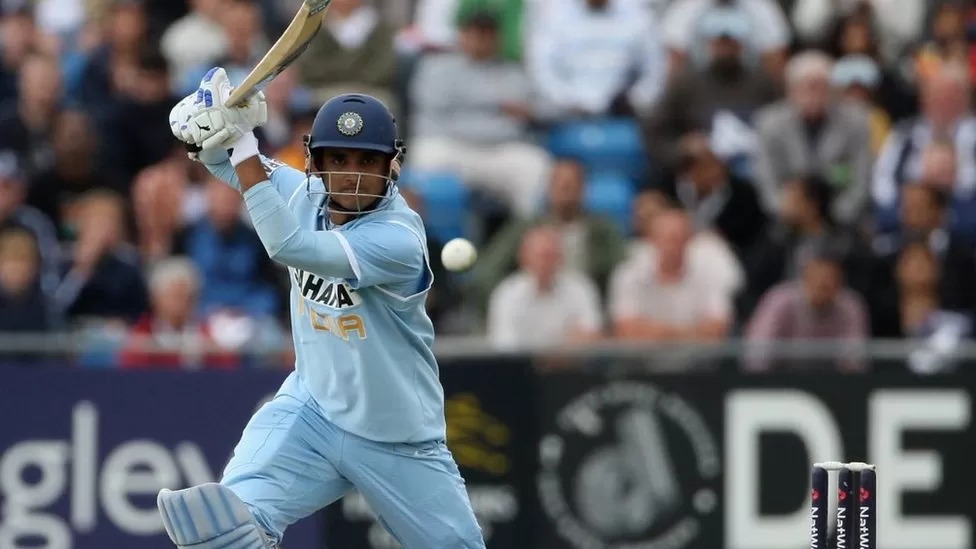
His journey in international cricket had many pit stops, with breakdowns and restarts. The going was not as smooth as some of his contemporaries In the Indian team. Often in the news even when not in the side, he was one of those on whom the saying ‘love him or hate him, you can’t ignore him’ sat perfectly. He had his critics, but was loved much more than hated, and not just in Bengal.
He is held in high esteem by those who play and/or watch the game. I remember Paras Mhambrey speaking highly of Sourav’s bare-chested, shirt-waving celebration from the sacred balcony of Lord’s after the 2002 NatWest Trophy win. “Brilliant. That’s how you give it back,” he had said. WV Raman once wrote in one of his columns, “Ganguly’s team did not win Test matches at home on Bunsen burners.” Cricket followers hail him as someone who built a team and inculcated the killer instinct.
How did he do it? He had vision is a reasonably close answer. I was not expecting it to unfurl in front of my eyes when the India-Zimbabwe ODI series got underway at Cuttack’s Barabati Stadium in December 2000. It was John Wright’s first series as India coach. Tipped to make his debut was Reetinder Singh Sodhi, a medium-pace-bowling all-rounder.
Four quick bowlers in home ODI
When it came to India, the norm those days or even now was to field two to three spinners and leave the middle overs to them. Nobody expected anything different in Cuttack, and everybody thought that if Sodhi played, one of Venkatesh Prasad or Ajit Agarkar would make room for two spinners. Javagal Srinath was the first-choice quick. Springing a surprise, Sourav picked Sodhi with the three quicks. Sunil Joshi was the lone spinner in the XI, with Sachin Tendulkar as back-up.
Not that Sodhi made a big impression, but that is not the story. Why did Sourav, in the early days of his captaincy, change what had almost been cast in stone as a strategy? That was the most intriguing aspect of this match. Nobody could remember when – unless compelled by the weather – an Indian team had last played a home ODI with four quick-to-quickish bowlers and just one spinner. This was a big deviation from what had been the pattern.
Those days, after matches, scribes could go up and speak to the players if they were willing. Sourav was seated outside the pavilion in a cane chair, which one used to see at cricket grounds back then. He was surrounded by reporters. I had only one question. When my turn came, I asked, “Generally in ODIs in India, we don’t see the team going in with just one spinner. What prompted you to change that?”
Ultimate aim to win abroad
The reply startled us all. “I want to win abroad,” Sourav said. “To be able to do that, we need a bunch of fast bowlers. You can’t prepare them if they are fielded only in away games. The process has to start at home, and we will try to do that as much as possible. Winning overseas is the ultimate test, and we can’t do it depending only on spinners.”
That is what you call vision. Sourav saw something which was quite distant and not seen often enough by his predecessors. He was quick to decide what he wanted, what resources were needed, and how to fast-track and groom them. Bowlers like Zaheer Khan and Ashish Nehra prospered under him, and served Indian cricket until well after Sourav’s retirement.
Changing the collective outlook
This was a paradigm shift. Of India’s three memorable away wins until then, two — against West Indies and England in 1971 — were achieved thanks to the spinners. The other one, against England in 1986, was won by some consistent performances from the quicker bowlers led by Kapil Dev. Sourav decided that this was going to be his ploy, and started the process at the first opportunity.
In terms of series wins away from home, Sourav’s teams did not achieve much. There were draws in Australia and England, and defeats in New Zealand, South Africa and West Indies. But a process had been started. Sourav persuaded Srinath to extend his career, because he knew India had no substitute for his pace. He welcomed fresh fast bowlers, and Irfan Pathan made his debut under him.
The outcome of this change was enjoyed more by Sourav’s successors as captain. Teams under Rahul Dravid, MS Dhoni, Virat Kohli all won matches or series abroad on the strength of their fast bowling units. It was Sourav who started this. Like almost every other process, this one too took a bit of time to produce the results. By then, Sourav was not in the hot seat.
But, so what? No one can take this credit away from Sourav, that he changed India’s approach towards international cricket. It was not just cockiness or looking the opponent in the eye. There was a shrewd brain also, which realised quickly what needed to be done to succeed abroad. Not just fast bowlers, but Harbhajan Singh, Virender Sehwag and Yuvraj Singh all flourished under him. That’s why all over India, Sourav is hailed as the leader who changed the team’s outlook along with the aspiration levels of the fans.
Also Read: Ganguly Waving Shirt on Lord’s Balcony was an Iconic Moment, says Gopichand




